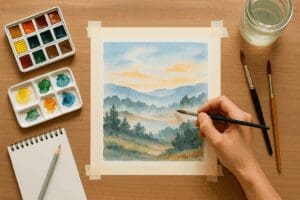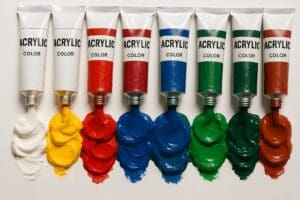Creating Realistic Portraits with Soft Pastels: Step-by-Step Techniques
Soft pastels are a powerful medium for portrait artists, allowing for rich colors, smooth blending, and lifelike textures. Whether you’re a beginner or looking to refine your skills, mastering soft pastel techniques can bring your portraits to life. This guide walks you through essential steps, from choosing the right materials to advanced blending and layering techniques.
Why Choose Soft Pastels for Portraits?
Soft pastels offer a unique combination of vibrancy and versatility. Unlike oil or acrylic paints, pastels don’t require drying time, making them ideal for spontaneous blending and layering. They are also excellent for capturing subtle skin tones, delicate features, and expressive eyes.
Benefits of using soft pastels for portraits:
- Intense color payoff
- Smooth blending capabilities
- Ability to create detailed textures
- No drying time or need for solvents
Essential Materials for Soft Pastel Portraits
Before diving into techniques, having the right materials is crucial for achieving realistic results.
1. Soft Pastels
Soft pastels come in various brands, each offering different textures and pigment qualities. Some recommended brands for portrait work include:
- Sennelier (rich pigments, buttery texture)
- Unison Colour (high-quality, smooth application)
- Rembrandt (medium softness, excellent for layering)
2. Pastel Paper
Choosing the right surface is key to achieving depth and texture. Some excellent pastel papers include:
- Pastelmat by Clairefontaine (excellent for layering and fine details)
- Canson Mi-Teintes (versatile, textured surface)
- UART Sanded Paper (holds multiple layers of pastel)
3. Additional Tools
- Blending tools: Fingers, cotton swabs, soft brushes
- Kneaded eraser: For lifting highlights
- Fixative spray: Helps preserve your work and prevent smudging
- Pastel pencils: For fine details like eyelashes and wrinkles
Step-by-Step Guide to Creating a Realistic Soft Pastel Portrait
Step 1: Sketching the Outline
Begin with a light sketch using a pastel pencil or charcoal. Keep the lines faint to avoid overpowering the final colors. Focus on key facial proportions, using guidelines to align the eyes, nose, and mouth.
Step 2: Establishing the Base Tones
Using light, soft pastel strokes, block in the base skin tones. Avoid using pure white or black—opt for warm ochres, peaches, and blues to build a realistic undertone.
Step 3: Layering and Blending
Apply light layers of color, blending gently with fingers or a blending tool. Work from general tones to specific details, ensuring smooth transitions between highlights and shadows.
Blending techniques:
- Feathering: Use light strokes for soft transitions.
- Stippling: Dabbing technique for adding realistic skin texture.
- Cross-hatching: Layering strokes in different directions for depth.
Step 4: Adding Depth with Shadows and Highlights
Depth is key to realism. Identify the light source and use:
- Cool blues and purples for shadows
- Warm yellows and whites for highlights
Use a kneaded eraser to gently lift highlights on the nose, cheekbones, and forehead.
Step 5: Capturing Lifelike Eyes
Eyes are the focal point of any portrait. Pay attention to reflections and highlights in the iris.
- Use white pastel pencil to add catchlights.
- Layer dark browns and blues to create depth in the iris.
- Blend the whites of the eyes with soft greys to avoid a flat appearance.
Step 6: Refining Facial Features
Enhance subtle facial details such as wrinkles, lips, and eyebrows.
- Lips: Blend reds, pinks, and a touch of blue for depth.
- Hair: Use directional strokes to mimic hair strands, incorporating multiple shades for realism.
- Skin texture: Use light dots and strokes to replicate pores and blemishes for added realism.
Step 7: Final Touches and Fixative Application
Once the portrait is complete, review the balance of tones and details. Lightly spray a fixative to protect the artwork, but avoid excessive application as it can dull colors.
Tips for Mastering Soft Pastel Portraits
- Work from dark to light: Build layers gradually.
- Use color temperature effectively: Warm tones advance, cool tones recede.
- Avoid over-blending: Keep some texture for a natural effect.
- Experiment with layering: More layers create richer depth.
- Study reference photos carefully: Observe fine details in skin tones and shadows.
External Resources for Learning Soft Pastel Portraits
- The Pastel Society UK
- Soft Pastel Techniques by Jackson’s Art
- Portrait Drawing Tips by Artists Network
Final Thoughts
Creating realistic portraits with soft pastels requires patience, practice, and the right techniques. By focusing on layering, blending, and capturing fine details, you can bring warmth and life to your portraits. Whether you’re a beginner or an experienced artist, mastering these steps will elevate your soft pastel skills.
*For collaborations, art features, or inquiries, please contact us at in**@**********rt.ie. Don’t forget to follow us on Instagram, Facebook, Twitter.
Disclaimer: The views and opinions expressed in this article do not necessarily reflect the official policy or position of Irish Artmart.
Irish Artmart – Your Gateway to Artistic Excellence.
Tips to Express Your Creative Vision – Irish Artmart Podcast




